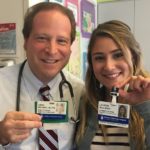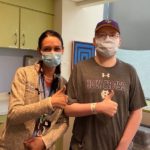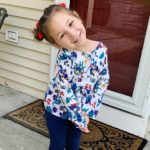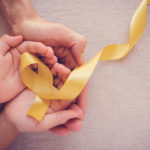Meghan’s journey with UESL: Finding treatment for a rare form of liver cancer

In the spring of 2017, Meghan Tompkins and her parents, Danni and Michael, arrived at the Dana Farber/Boston Children’s Cancer and Blood Disorder Center. They were there for an appointment after Meghan’s doctors identified a suspicious spot on her liver. Meghan, then 13, only knew that she was having gastrointestinal symptoms — no one had uttered the word “cancer” yet — but when she saw the sign, she paused for a moment and then spoke. “If this turns out to be cancer, I want to cut off my hair and donate it,” she said.
A difficult answer
It would be a couple of weeks before the Tompkins family had an answer. Upon meeting with Dr. Allison O’Neill, director of the hospital’s Liver Tumor Center, they learned that Meghan had a large tumor in her liver, but they wouldn’t know whether it was cancerous until she underwent surgery. The surgical procedure, which removed about three-quarters of Meghan’s liver, as well as her gallbladder, lasted more than 10 hours.
The news from the pathologist wasn’t what the family had hoped: Meghan had undifferentiated embryonal sarcoma of the liver (UESL), a very rare type of liver cancer that mostly affects children. But there was a glimmer of hope, too. “We know how to treat this,” Dr. O’Neill told Danni and Michael.
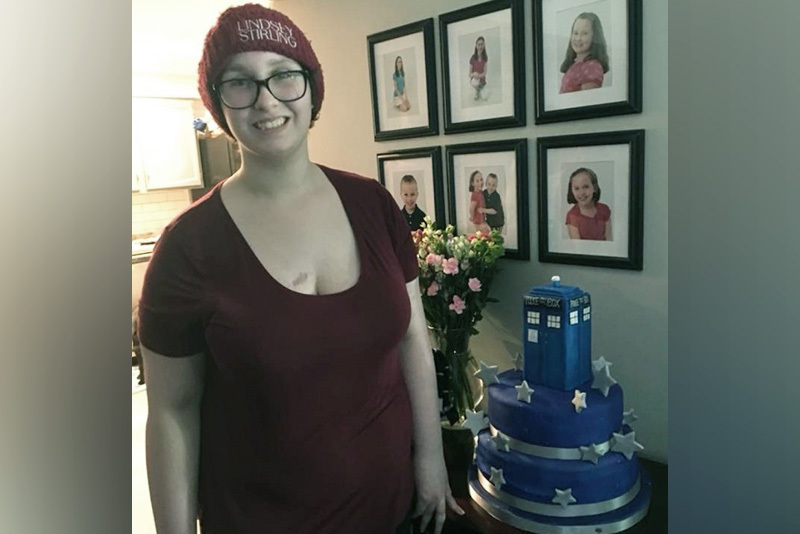
Intense treatment
The family was still understandably nervous but put their faith in Meghan’s care team. “’If Dr. O’Neill says she can treat this, she will,’” Danni remembers Michael saying. Following her surgery, Meghan underwent intense chemotherapy. Because the drugs can cause serious side effects, including bladder and heart damage, she had to be admitted to the hospital for each treatment.
After almost four months of therapy — including a break in August so Meghan could participate in her oldest sibling’s wedding — Meghan was done. In November 2020, she officially graduated into the hospital’s survivorship program.
Humor — and bravery
Like the parents of many kids with rare and complex conditions, Danni and Michael say that Meghan has only now begun to express how stressful the experience was for her. “At the time, she held us all together with her bravery,” says Danni.
But there have been bright spots, too. Meghan bonded with her anesthesiologist over their love for snow leopards and she gave the doctor a stuffed toy of the animal following surgery. Known for her dry, sarcastic humor, she also sent a note to her surgeon, Dr. Heung Bae Kim. “Thank you for staying with me for 11 hours,” she wrote in the card. “Most people can only stand me for one.”
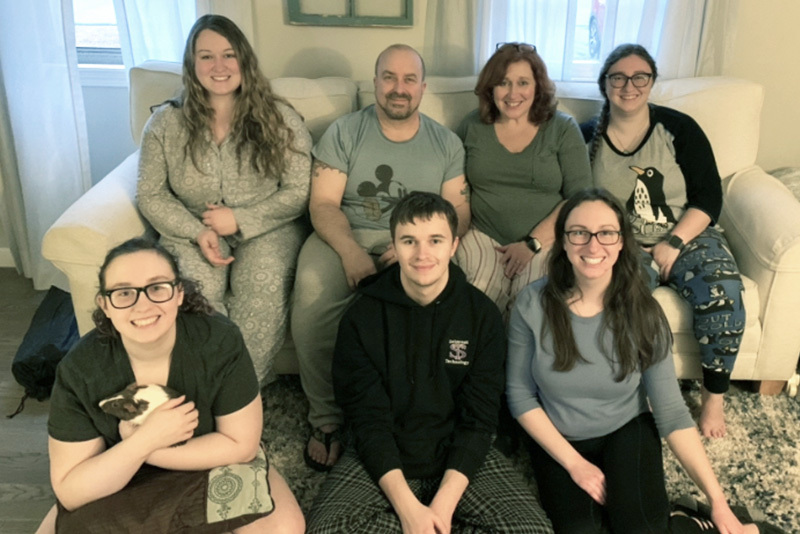
A life-changing experience
She’s also found a new passion. When a volunteer from the Hole in the Wall Gang Camp first approached her at the hospital, Meghan wasn’t all that interested. But by the next summer, she was attending camp and bonding with other teens with serious illnesses. Since then, she’s gone twice — and is considering volunteering herself. “It’s been almost life changing for her,” says Danni.
And her hair? Danni, who is a hair stylist, helped Meghan cut it herself before donating it to be made into wigs. “We would never wish this on anyone, but we also gained so much from our experiences at Boston Children’s and The Jimmy Fund Clinic at Dana-Farber,” says Danni. “Opportunities we could never imagined opened up to us as a family. We’re very blessed.”
Learn more about the Liver Tumor Center.
Related Posts :
-

A series of coincidences unite two people to fight childhood cancer
When Lauren Wolinski accepted a job as a summer intern in the oncology unit at Boston Children’s Hospital, she ...
-

Cancer won’t stop me, and neither will COVID-19
Most people my age look at COVID-19 as a burden on their everyday lives of seeing friends, hanging out, and ...
-

Charlee: Bouncing back after neuroblastoma treatment
Call it mother’s intuition, but leading up to her daughter’s cancer diagnosis, Erica Jensen knew something wasn’t ...
-

Common questions about childhood cancer, answered
Childhood cancer is rare, but when it happens, it usually brings up an endless stream of questions for parents. How ...


